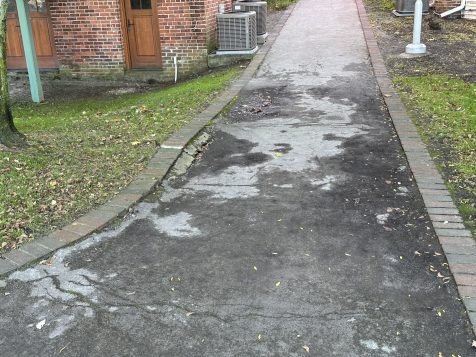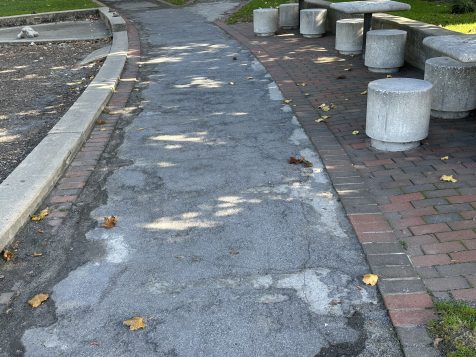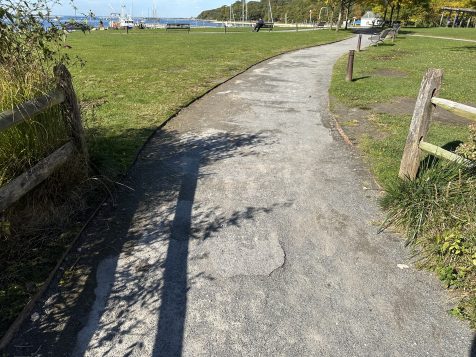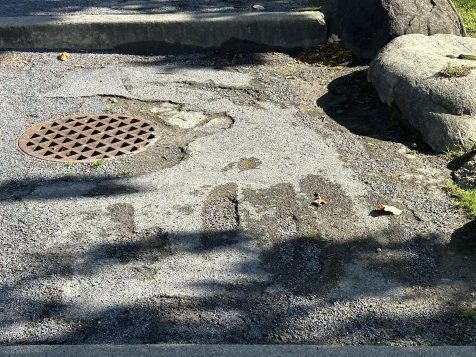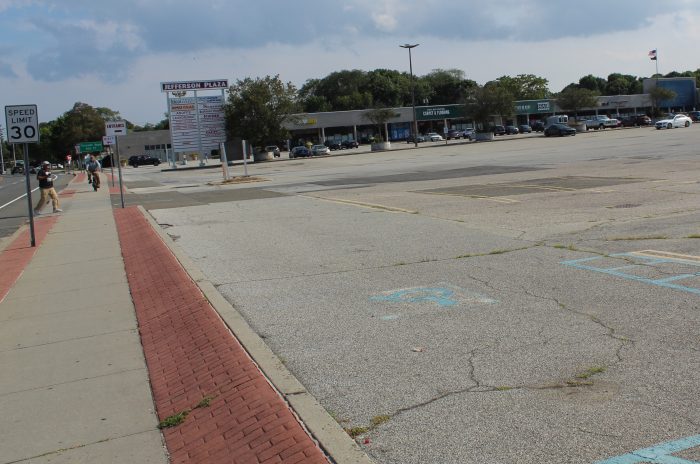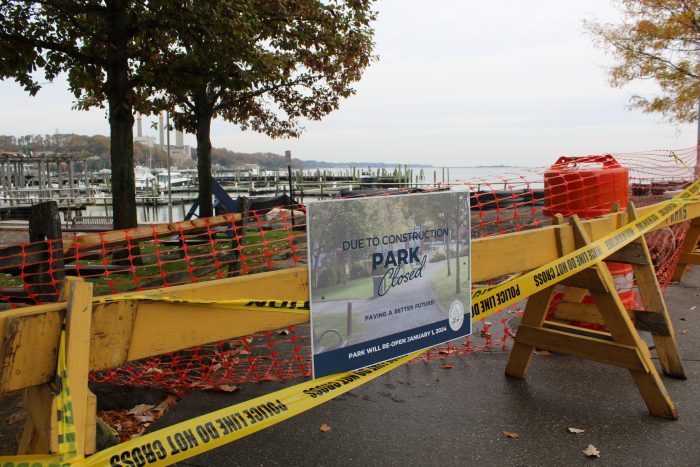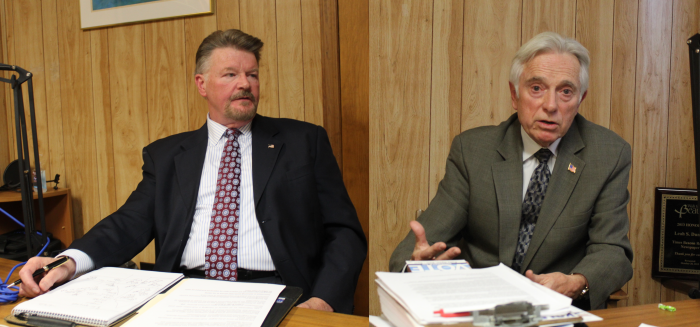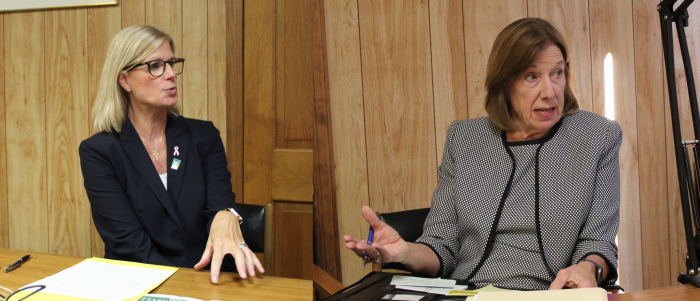Due to walkway reconstruction, Harborfront Park in Port Jefferson is currently closed to the public.
In an exclusive interview, Village of Port Jefferson Mayor Lauren Sheprow offered updates on the park project, outlining the motivations guiding this initiative.
“We wanted to make sure that we could do the whole park with whatever solution we came up with,” she said. “The priority was safety, and then fiscal responsibility was the second responsibility,” leading to the choice of asphalt.
Roger Corcella, project manager for the park, said the preexisting walkways were not adequately maintained, prompting safety concerns from village officials.
He said the walkways were “in desperate need of repair,” noting, “It wasn’t safe to walk anymore, especially if you had any physical issues. It wasn’t [Americans with Disabilities Act]-compliant.”
Corcella added that the village considered various factors before deciding on asphalt for the walkways. He said the village required a material that would be cost-effective, durable, eco-friendly, customizable, ADA-compliant and require minimal maintenance.
He pointed to other municipalities, such as Brookhaven and Babylon, which use asphalt on park surfaces. “This is a very common practice to use this,” he said.
Further defending the choice of material, Corcella noted that asphalt enables Harborfront Park to serve residents as “a 12-month park” due to simple snow removal service.
During the November general meeting of the village board of trustees, former Mayor Margot Garant objected to the use of asphalt over stamped concrete due to environmental and permeability concerns [See story, “Harborfront Park walkways spark debate, former and current Port Jeff officials clash over materials,” Nov. 9, TBR News Media]. Responding to the objections, Sheprow reiterated her public safety concerns.
“We get way too many reports of trips and falls in the community and didn’t want Harborfront Park to be one of those locations,” the mayor said. “Therefore, we had to look at the whole entire park and look at resurfacing the walkways around the entire park.”
“We want to make the park accessible to everybody, and if we put in stamped concrete, we wouldn’t be able to do the whole park,” she added.
To finance the costs associated with the walkway reconstruction project, which totals $248,907, the village board is making use of grants from Suffolk County and the Town of Brookhaven that will subsidize over a third of the overall expense.
“We were looking at $90,000 that would help us pay for this project,” Sheprow said. “Had we not acted immediately, we wouldn’t have received it,” adding, “In order to be eligible for those grants, the understanding was that [the project] would have to be for the entire park. … We needed to be compliant with the requirements of the grants.”
During the interview, Sheprow referred to the practice of “deferred maintenance.” Given the safety concerns identified with the walkways, she concluded that the administration had to act.
“If you don’t address a situation when it first becomes an issue, it becomes an even bigger issue,” she said, adding, “My goal was not to defer the maintenance of the park any longer — to let it become a bigger issue — but to address it immediately.”
Corcella said he aims to complete the walkway reconstruction project by mid-December. To view the village’s full Q&A page on the Harborfront Park project, visit portjeff.com/harborfrontparkconstruction.

